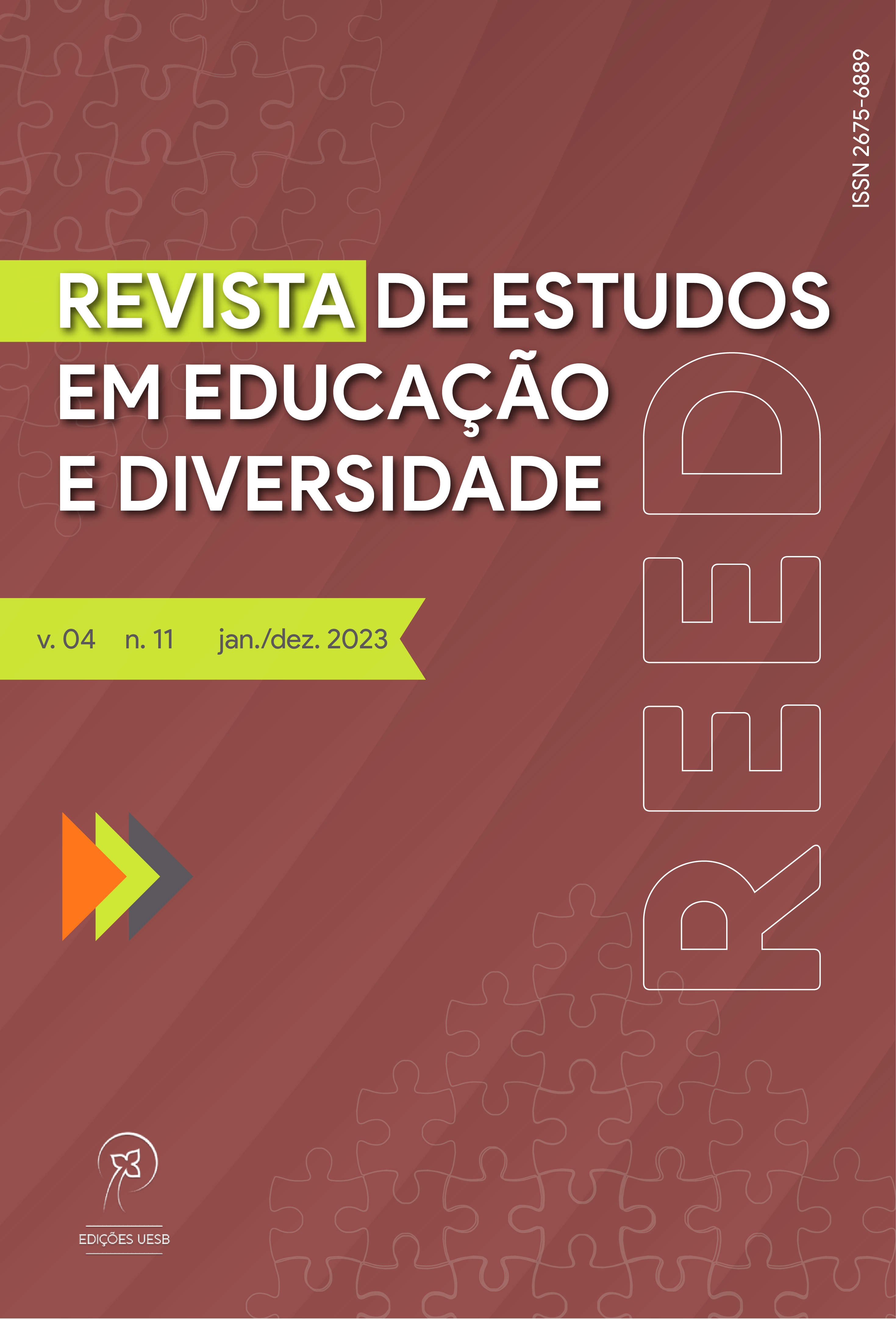Teaching the concept of atomic orbital: some reflections
DOI:
https://doi.org/10.22481/reed.v4i11.14028Keywords:
Atomic orbital, Teaching, ChemistryAbstract
Among the concepts taught in chemistry, the concept of atomic orbital is one of the most important, as it helps to understand the quantum theories of chemical bonding. However, this concept appears in higher-level Chemistry books in different ways, as a wave function or as a region of space, causing confusion and doubts among students. An explanation for these very different definitions for Orbital may be the fact that some scientists consider it real and this has sparked many discussions. A growing number of educators have opposed the use of the orbital concept in basic chemistry courses as they consider this concept to be highly abstract and beyond the reach of many students. There are also those who defend teaching the concept of orbital, as it is scientifically and pedagogically incorrect to teach outdated theories. This work aims to reflect on teaching the concept of atomic orbital based on literature. One of the problems highlighted for teaching the concept of atomic orbital is related to the fact that the chemistry subject is not always taught by teachers trained in chemistry and the variety of textbooks presents this concept in a very insufficient way.
Downloads
References
AUTSCHBACH, Jochen. Orbitais: alguma ficção e alguns fatos. Revista de Educação Química. v. 8, p. 1032-1040, 2012.
BALL, David. W. Físico-Química. v. 1. São Paulo: Cengage Learning, 2005.
BARRADAS-SOLAS, Francisco; GÓMEZ, Pedro J. Sánchez. Orbitals in chemical education. An analysis through their graphical representations. Chemistry Education Research and Practice, p. 1-17, 2014.
BERRY, Keith OO. What should we teach them in high school? Journal of Chemical Education. 1986.
BENT, Henry A. Should orbitals be x-rated in beginning chemistry courses?. Journal of Chemical Education, v. 61, n. 5, p. 421, 1984.
BROWN, T. L.; BURDGE, J. R.; BURSTEN, B. E. Química a Ciência Central. 9. ed. Pearson, 2005.
CERVELLATI, R.; PERUGINI, D. The understanding of the atomic orbital concept by Italian high school students. Journal of Chemical Education, v. 58, n. 7, p. 568, 1981.
GILLESPIE, Ronald J. What is wrong with the general chemistry course? Journal Chemical Education, v. 68, n. 3, p. 192, 1991.
HUMPHREYS, Colin J. Electrons seen in orbit. Nature, v. 401, n. 6748, p. 21-22, 1999.
LABARCA, Martín; LOMBARDI, Olimpia. Why orbitals do not exist?. Foundations of Chemistry, v. 12, p. 149-157, 2010.
LIMA, M. M.; SANTOS, E. S.; SILVA, J. L. P. B. Modelo Atômico Quântico em Coleções de Química Aprovadas no PNLD 20parte II: Indeterminação De Trajetórias E Orbitais. In: ENCONTRO NACIONAL DE PESQUISA EM EDUCAÇÃO EM CIÊNCIAS, 10, 2015, Águas de Lindóia. Anais [...]. Águas de Lindóia: ABRAPEC, 2015.Online.
LIMA, M. M; SILVA, J. L. P. B. Um sistema de conceitos para o ensino de orbital atômico. In: ENCONTRO NACIONAL DE ENSINO DE QUÍMICA ,18., 2016, Florianópolis. Anais [...]. Florianópolis: SBQ, 2016. Online.
LIMA, Marcio M. Orbital Atômico: Aprendizagem e desenvolvimento do conceito por estudantes de química. 122 f. il. 2018. Dissertação (Mestrado) – Instituto de Física, Universidade Federal da Bahia, Salvador, 2018. OGILVE, J.F. The nature of the chemical bond—1990: There are no such things as orbitals! Journal of Chemical Education, v. 67, n. 4, p. 280, 1990.
PAULING, Linus. The nature of the chemical bond. Journal of Chemical Education, v. 69, n. 7, p. 519, 1992.
PESSOA JR, Osvaldo. Realismo e Verdade. Filosofia da Física Clássica. Curso ministrado pelo Depto. de Filosofia, FFLCH, USP para o 3o ano de Licenciatura de Física, IFUSP, 2014. Cap III. p.16-21.
RAMOS, L. C.; SANTOS, J. C.; SILVA, J. L. P. B. Modelo Atômico Quântico em Coleções de Química Aprovadas no PNLD 2015 parte I: quantum de energia, dualidade ondapartícula e números quânticos. In: ENCONTRO NACIONAL DE PESQUISA EM EDUCAÇÃO EM CIÊNCIAS, 10., 2015, Águas de Lindóia. Anais [...]. Águas de Lindóia: ABRAPEC, 2015. Online.
RAMOS, L. C.; SILVA, J. L. P. B. Modelo quântico do átomo: uma análise do ensino das noções de quantum de uma grandeza e comportamento dual da energia e da matéria. In: ENCONTRO NACIONAL DE ENSINO DE QUÍMICA, 16., 2012, Salvador. Anais [...]. Salvador: SBQ, 2012. Online.
SILVA, J. L. P. B; CUNHA, M. B. M. Para compreender o modelo atômico quântico atômico. In: ENCONTRO NACIONAL DE ENSINO DE QUÍMICA, 14., 2008, Curitiba. Anais [...]. Curitiba: SBQ, 2008. Online.
ROZENTALSKI, E. F.; PORTO, P. A. Uma questão não consensual no ensino de química–o caso dos orbitais. Enseñanza de las ciencias: revista de investigación y experiencias didácticas, n. Extra, p. 3109-3113, 2013.
TABER, K. S. Learning quanta: Barriers to stimulating transitions in student understanding of orbital ideas. Science education, v. 89, n. 1, p. 94-116, 2005.
TSAPARLIS, G. Atomic orbitals, molecular orbitals and related concepts: Conceptual difficulties among chemistry students. Research in Science Education, v. 27, n. 2, p. 271-287, 1997
TSAPARLIS, G.; PAPAPHOTIS, G. High‐school Students' Conceptual Difficulties and Attempts at Conceptual Change: The case of basic quantum chemical concepts. International Journal of Science Education, v. 31, n. 7, p. 895-930, 2009.
ZUO, J. M. et al. Direct observation of d-orbital holes and Cu–Cu bonding in Cu2O. Nature, v. 401, n. 6748, p. 49-52, 1999.
Downloads
Published
How to Cite
Issue
Section
License
Copyright (c) 2023 Revista de Estudos em Educação e Diversidade - REED

This work is licensed under a Creative Commons Attribution 4.0 International License.
You are free to:
Share - copy and redistribute the material in any medium or format; Adapt - remix, transform, and build from the material for any purpose, even commercially. This license is acceptable for Free Cultural Works. The licensor cannot revoke these freedoms as long as you follow the terms of the license.
Under the following terms:
Attribution - You must appropriately give credit, provide a link to the license, and indicate if any changes have been made. You may do so in any reasonable way, but not in a way that suggests that you or your use is endorsed by the licensor.
There are no additional restrictions - You cannot apply legal terms or technological measures that legally restrict others to make any use permitted by the license.






